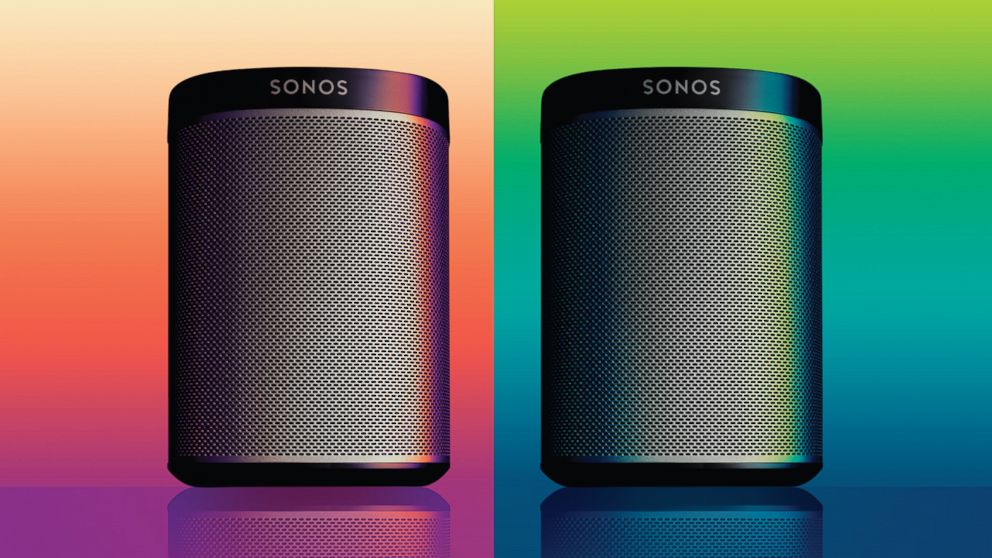With PLAY:1 and 2 Room Starter Set, Sonos Just Got A Lot Better

— -- Sonos has long been popular for delivering high-quality sound in a downsized, aesthetically pleasing speaker system.
For music lovers on the hunt for wireless speakers that stream music digitally, the Santa Barbara, Calif., company is considered the gold standard, bringing much-needed credibility to the category and in many cases rivaling the audio quality of a traditional sound systems.
In an increasingly crowded field of competitors, Sonos has managed to earn that reputation by producing a sterling sound that is controlled by apps on PCs, Macs, tablets and smartphones without the messy wiring that usually adorns top flight music systems. The Sonos speakers can be used alone or several can be networked together to form a whole-house system.
Best of all: It requires no professional installation. In most cases, all that’s required is plugging the speaker into an electrical outlet, launching the smartphone app and then pressing a few buttons to get the speaker paired with your home’s Wi-Fi network.
Yet the biggest drawback for many consumers has been its prices which have been relatively expensive, compared to some competitors. But that’s also changing.
Sonos recently announced a discount on its “2 Room Starter Set.” It is now selling for a limited time a package of two speakers for just $349, or a discount of $50 from the standard price.
The “2 Room Starter Set” includes two of Sonos’ PLAY:1 speakers, which typically sell for $199.99 each. The speakers can operate together to provide audio throughout your house. The starter set includes two speakers but consumers can add more. (Sonos allows you to connect up to 32 speakers at once and stream 32 different audio sources simultaneously, the company says.)
The PLAY:1’s beauty is in it’s simple set-up and crisp, rich sound that easily fills a large room. And users can designate the two speakers to serve as a stereo pair, adding to the quality of sound.
And because its wireless speakers aren’t tethered to smartphones via Bluetooth, it works well even when you move out of short range from the device. While convenient, portable Bluetooth speakers typically have lower grade sound quality and can cut out when you get out of range.
Of course, Sonos has other, more advanced products for the ardent music lover. They range between $300 and $700. Its Playbar, an attractive, thin speaker strip that complements HD television screens with HiFi sound, retails for $699. Playbar requires just two cords - a power cord and optical cord - and syncs with other Sonos speakers wirelessly and also plays music. The device plays all sources plugged in to your HDTV including cable/SAT boxes, Blu-Ray players, and video game consoles.
The rising popularity of Sonos comes as the market for wireless music systems is expanding. An estimated 30 million wireless speakers shipped last year, up from 5 million in 2012, according to Futuresource Consulting. Sonos currently commands 16 percent in dollar share of the overall wireless speaker market, just behind Bose, according to the NPD Group (Privately held Sonos reportedly expects to record $1 billion in sales for 2015, or nearly double from 2013.)
“We’ve reached a watershed moment for streaming music,” Sonos Co-Founder and CEO John MacFarlane wrote recently. “Music fans are taking advantage of a rapidly evolving landscape of technologies and services that are redefining our music experience, and expanding our engagement with music and artists in ways that were previously unimaginable.”
Sonos research shows 92 percent of all music listening on Sonos globally is streaming radio or paid on-demand with its customer base bypassing existing music collections.
“The future belongs to those who can create the most seamless connection between the listener, the artist and their work,” MacFarlane added. “When the dust clears, it will be the artists who will define what the future of streaming is going to look — and more importantly sound — like, making music lovers the real winners.”




